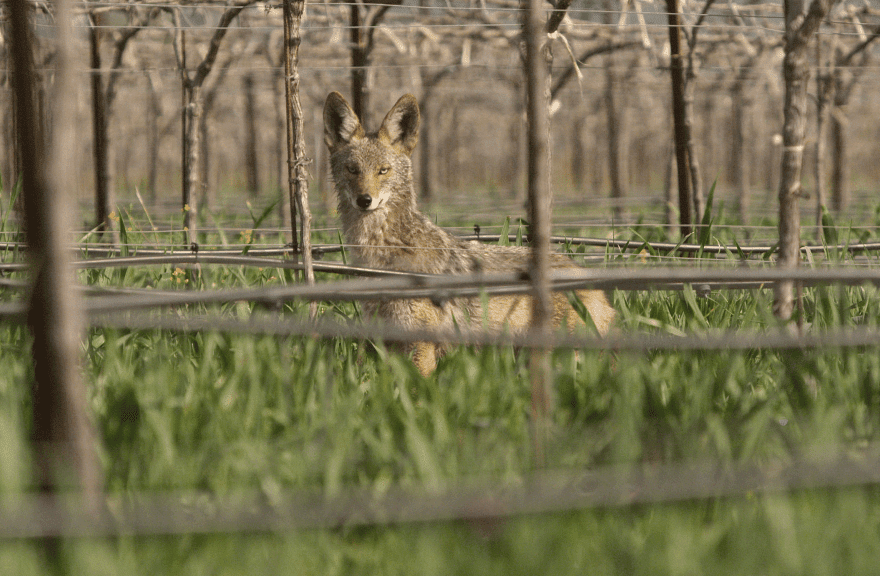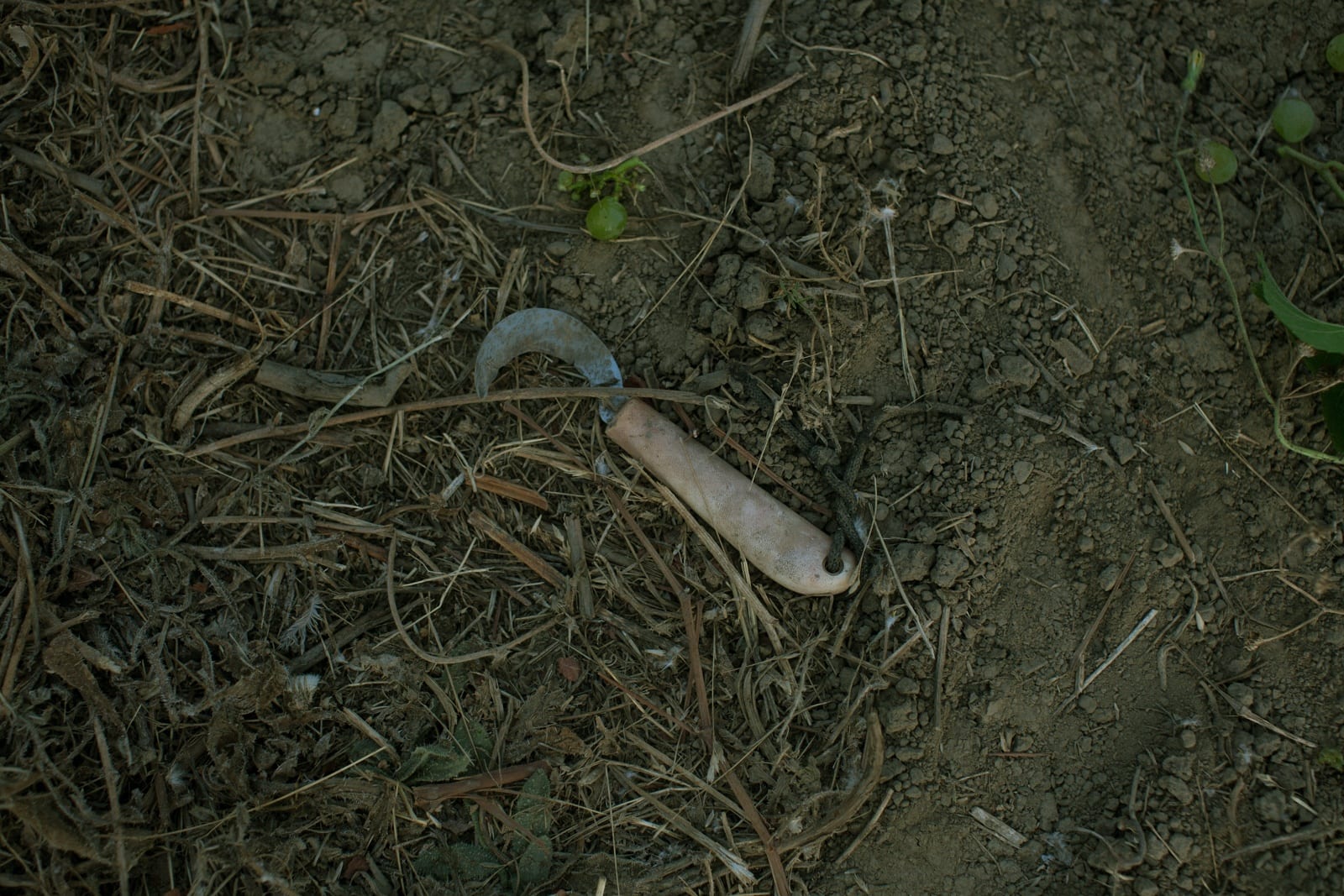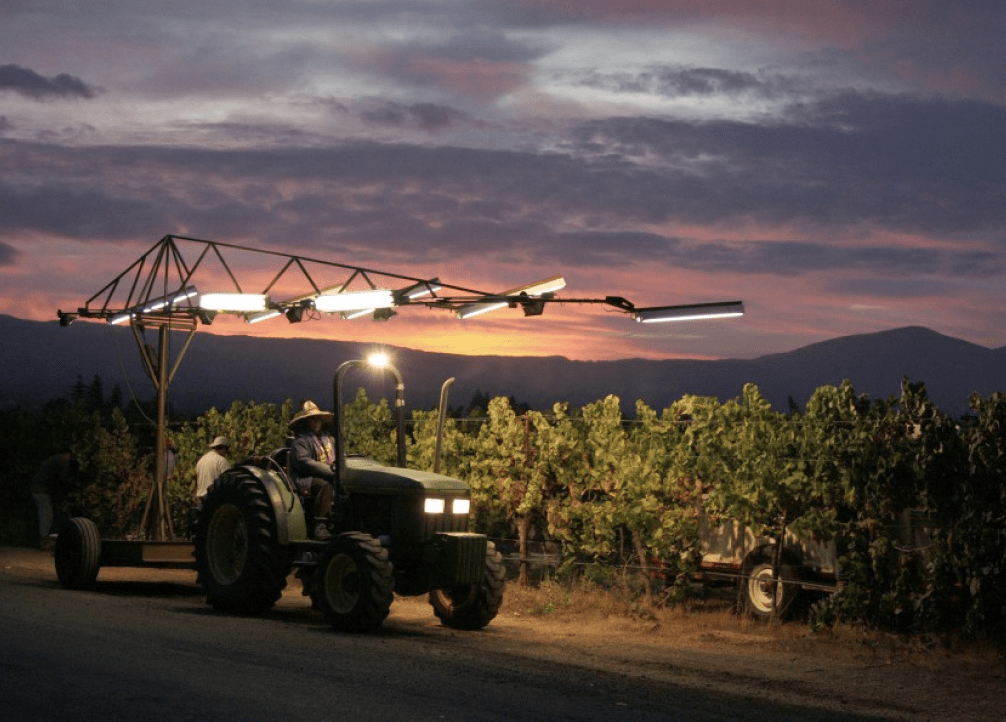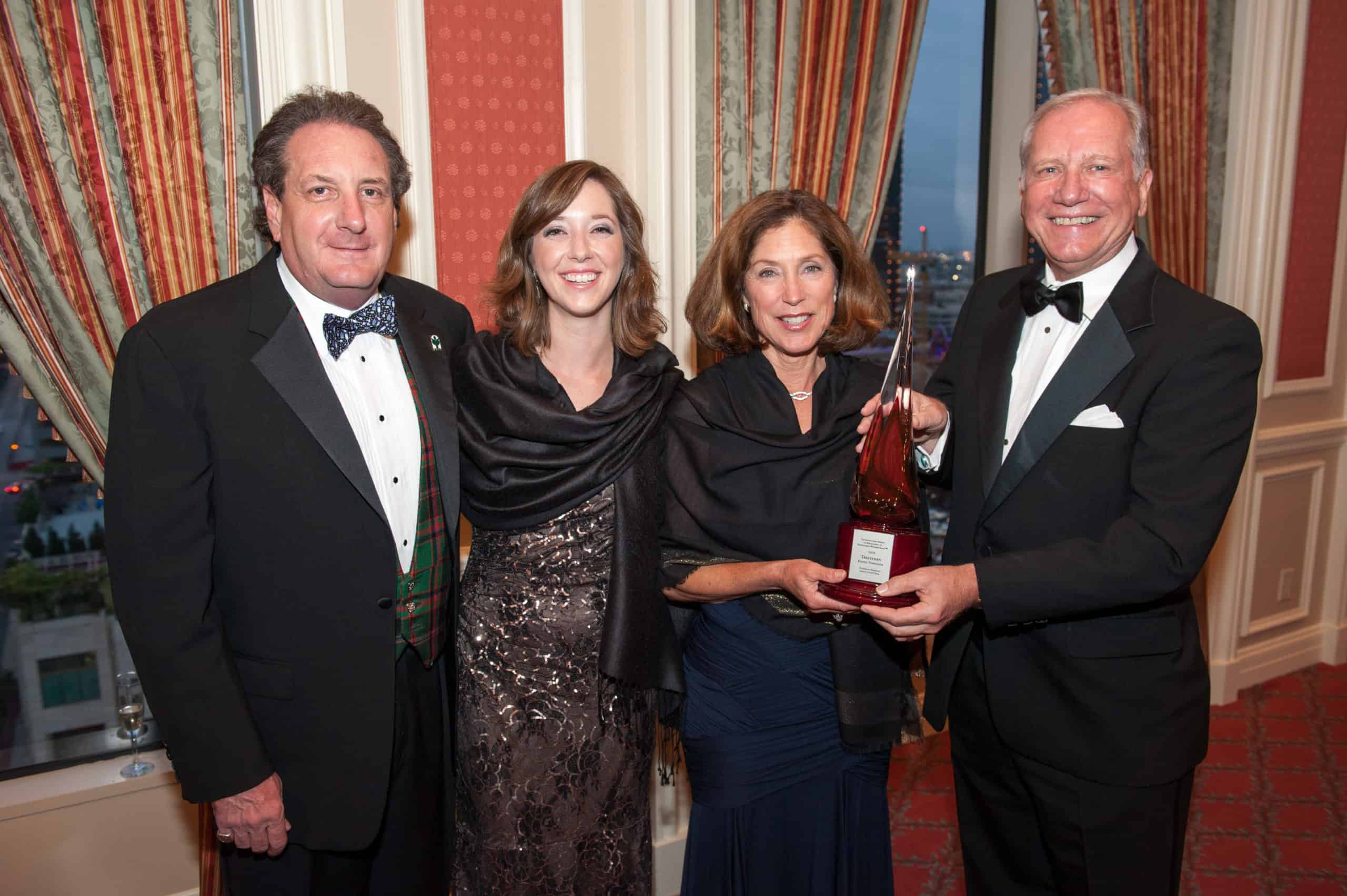Sustainability
2022 Sustainable Winegrowing Leadership Award
Trefethen is pleased to announce that we have been honored with the California Green Medal Environment Award for 2022. The California Green Medal Sustainable Winegrowing Leadership Awards provide recognition to vineyards and wineries that are leaders in implementing the three tenets of sustainability: environmental, economic, and social equity.
When we think of sustainability, we look at what will help us thrive for another three generations; how we can continue to farm the best quality grapes while sustaining our business and our land, all while enriching the lives of those that work here and those that enjoy our wines around the world. With that important context, we consider our estate as an integrated vineyard and winery ecosystem and focus on the following elements to build resilience within it.

“Everything we do comes from this land, so we strive to keep it healthy.” – Hailey Trefethen
Biodiversity
Emphasizing biodiversity in our vineyard uses the power of nature to bring balance and stability. We have placed nesting boxes for bluebirds, owls, and bats around the vineyard. All of these species are native to the area and play important roles as natural predators. Bats and bluebirds are voracious insectivores, doing their part to keep our insect populations in check. With over a dozen active owl boxes on property, our gopher and field mouse populations are also kept in balance, considering that one family of barn owls will eat as many as 2,400 rodents in a year! Additionally, the large oak and walnut trees across the property are great perches for other birds of prey such as kestrels and red-tailed hawks who cast their watchful eyes over the vineyard during the daytime hours. Down the vineyard rows, we maintain cover crops which provide habitat for beneficial insects, spiders, jackrabbits, and more, all of whom play important roles in our ecosystem. On the north edge of our Main Ranch, we have carefully restored a section of Dry Creek so that it remains a habitat for native aquatic species. Up at our Hillspring vineyard, most of our property – more than 100 acres – is kept entirely wild as native oak woodland replete with local species of flora and fauna.
Carbon Capture
Given that greenhouse gases contribute to the risk of global climate change, we have developed programs to decrease our emissions, including reductions in our fossil fuel consumption. Another important aspect of our approach is increasing our sequestration of atmospheric carbon dioxide. In the vineyard, this includes planting vigorous cover crops which grow throughout the winter season, before eventually decaying into the soil, holding carbon in the form of organic matter which also benefits soil health. In the cellar, we started a pilot project with Earthly Labs for the 2021 harvest season, using their proprietary technology to capture carbon dioxide from our active fermentations. Carbon dioxide is a natural by-product of fermentation and their technology captures the gas, purifies it, and stores it as a liquid, which can then be reused in various industrial applications. We were the first to use this technology in a winery setting and we hope that the practice will be more widespread in the future, helping other wineries reduce their own carbon footprints.
Check out Wine Spectator’s Featured Story on Sustainability.
Soil Health
As an estate property, every bottle of wine starts in the vineyard. Everything we do comes from this land. So, we strive to keep it healthy. That starts by limiting what we take from it. Only the juice of grapes grown here, in the form of wine, leaves the property. Every other part of the grape cluster – the stem, the skins, the seeds – is combined with clippings from the gardens and manure from our horses to make a rich compost which is spread back out into the vineyard each year.
We also embrace the use of cover crops, cultivating specific plants in between the vine rows, which not only increases biodiversity, as mentioned above, but can improve soil health. One primary benefit of cover cropping is the increase in organic matter as the plants break down into the soil. Cover crop use can also increase water infiltration as the roots create channels in the soil and they can directly impact soil fertility via nitrogen fixation. Legumes, such as beans and peas, have evolved a symbiotic relationship with certain bacteria that allows them to “fix” atmospheric nitrogen into more plant available forms. This means that planting broad beans in our vine rows is like naturally fertilizing the vineyard! We can also use cover crops for the natural control of some soil pests. The beautiful yellow mustard that you see in our vineyards in late winter has very spicy roots that have been shown to impede soil nematode populations.

“We think of our estate as one integrated ecosystem. Our goal is to develop a vineyard that takes care of itself as much as possible.” – Jon Ruel
Water Conservation
Gene Trefethen’s industrial background with Kaiser Industries gave us a head start with water conservation. Thinking like an engineer, he set up robust water infrastructure across the property including two reservoirs. A central drain was constructed at the winery to capture the run-off during winter storms and the used water when we wash our tanks and barrels. This water is transferred to biological settlement ponds where the organic compounds are digested by bacteria, rendering the water appropriate for re-use in vineyard irrigation. We were ahead of our time in this regard; many other wineries have only recently put their efforts in these areas after recent drought years or when “green” became a buzzword. In addition to our important infrastructure, we pay close attention to our water usage, developing conservation-minded protocols for all of our activities. On the farming side, deficit irrigation – the practice of restricting the water available to the vines – both helps conserve water and is beneficial to wine quality, as the vines focus their energy on ripening grapes rather than growing a large canopy. Soil moisture probes throughout the vineyard monitor the water available to the vine roots at different depths providing detailed information for those irrigation decisions. Additionally, during every irrigation, lines are checked for clogs and leaks and repaired to ensure that we are not wasting any of this precious resource.
Energy Usage
With multiple solar arrays across the estate, we were one of the first wineries to offset 100% of our electricity usage with on-site solar power. This includes charging more and more electric cars, as we modernize our small fleet of company vehicles. On top of this, each year we make improvements around the property that help us reduce how much energy we use. Examples include moving to LED light fixtures, insulating our cooling lines, replacing old tractors with more efficient ones, and replacing old diesel pumps with new electric ones that feature variable frequency drives which ramp up or down depending on demand.
Waste Diversion
We also scrutinize our waste stream and we have been able to dramatically reduce the amount that goes to our local landfill. This includes a robust recycling program throughout our vineyard and winery operations for all recyclable paper, plastic and glass items. In addition to composting our pomace and returning it to the vineyard, we participate in a municipal composting program and have begun using compostable wares at all of our winery events.
Responsible Sourcing
Our ethos of sustainability extends to our various suppliers. Although we are our own integrated supply chain when it comes to the grapes for our wines, we do need to purchase various items for packaging, shipping, etc. We strive to understand the impacts of our purchases and to work with like-minded companies who also embrace sustainability. Our case boxes and marketing materials, for example, are made with post-consumer recycled content, and the end posts in our vineyard are repurposed old pipes.
Employment
Our workforce is also key to our sustainability. We consider our employees to be our extended family, and their attention to detail, drive for excellence, and skill, honed over years in this singular place, bring both a level of consistency and elevated quality to our wines. With a benefits program that goes beyond the ordinary, including the allocation of fresh produce from our gardens and wines from our cellar, we have developed an uncommon level of employee engagement and loyalty.
Certifications
One important principle of sustainability is continuous improvement. As such, each of these certification programs reviews us annually to ensure that we are making progress. Each year we put forth action plans with improvements and goals that we will accomplish before recertification the following year. Hailey Trefethen manages these certifications and works with the auditors each year, going through literally hundreds of questions related to our operations and how we approach every aspect of our business.
Napa Green Vineyard
A detailed program that addresses water quality, riparian habitat, soil erosion prevention and more, every property certified is looked at on an individual level while still held to high certification standards. Both our Main Ranch and Hillspring vineyards have been certified since 2006.
Napa Green Winery
A winery-specific regional program aimed at conserving water and energy, reducing waste, and preventing pollution, it covers everything from office paper to the materials we use on our bottling line. Metrics are gathered on water use, waste diversion, and electricity consumed. With those metrics, we can see our progress over time and compare ourselves to other wineries in Napa. Trefethen was the 15th winery in Napa Valley to be certified.

“I’ve been at this for 30 years and this is the best, most well-thought-out program I’ve ever seen.”– Yvon Chouinard, Environmentalist and Founder of Patagonia on Napa Green
Certified California Sustainable Vineyard & Winery
A statewide program, this certification requires practices that protect air and water quality, conserve water, promote energy efficiency, reduce pesticide use, and preserve ecosystems and animal habitat, among many other things. Trefethen was certified in 2012.

International Award of Excellence in Sustainable Winegrowing
We were the third recipient of this international award given by BRIT, the Botanical Research Institute of Texas. It is awarded to organizations that embrace the three tenets of sustainability; environmental, social, and economic aspects. It requires not only environmental leadership with agricultural and winemaking protocols but also a commitment to people and social responsibility.
